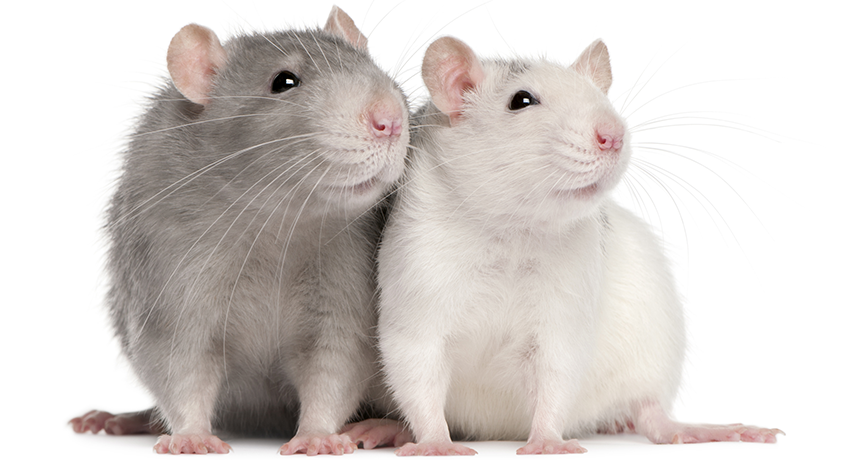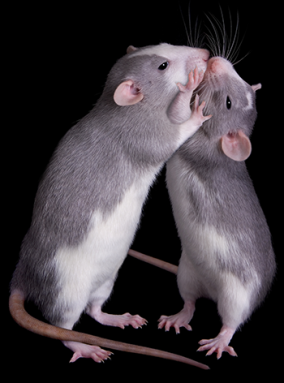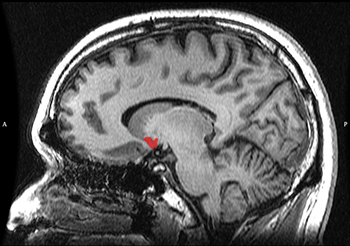The immune system has a say in how hard ‘teen’ rats play
As the brain’s immune cells chomp up the ends of neurons, male rats stop wrestling — and grow up

When rats are the human equivalent of teenagers, they love to wrestle with their BFFs. As they grow up, they chill out. A new study now offers clues to why.
GlobalP/iStockPhoto
Teenage boys like to wrestle. They bite at each other and will pin the other one down. But as they get older, this playful wrestling turns into a more dignified sniffing, and occasionally, a real fight. These aren’t human boys, of course. They’re rats. And a new study has shown that immune cells in their brains play some role in directing the transition from rough-and-tumble play to serious adult behaviors.
Young female rats don’t show nearly as much rough-and-tumble play as the guys their age. They don’t show the same style of style of brain development, either. That difference could help scientists learn more about how people’s brains mature — and what generally makes boys and girls behave so differently.
When humans hit adolescence, their behaviors change. As children, they valued adult attention most. As teens? Friends matter more. Teen rats are the same way, Ashley Kopec notes. She’s a neuroscientist — someone who studies the brain. She works at Harvard Medical School in Boston, Mass. “Adolescents [even rats] seem to be trying to get out on their own,” she says. Playing with friends is a part of that. “In rodents there’s a time when social play increases.”
And boy rats like to brawl. “It’s super cute,” Kopec says. “It’s rough-and-tumble wrestling.” The rats jump around the cage, pin each other down and nip at each other. Some of this pinning and nipping might be a way to practice attacking and defending themselves. Male rats will need such skills as they head out into the adult world.
It’s clear the play is also fun — and for a good reason. It activates dopamine (DOAP-uh-meen). This is a chemical that serves as a messenger between cells. Dopamine, in particular, is a messenger associated with things that feel good. It spikes in an area of the brain called the nucleus accumbens (NOO-klee-us Uh-KUM-benz) when a substance (such as food) or activity (such as play) is pleasing. In adult rats, play gives a brief dopamine zing. As they get older, however, the spikes in dopamine taper off. And now the antics aren’t so much fun. But in teen rats, the wrestling — and the dopamine surge — never get old.
Calling in the brain cops
Of course, adolescent rats eventually become adults. Teen boys go from all-night adventures to middle-aged dads who drone on about mowing the lawn. Rats go from the joy of rat wrestling to the dignified sniffed greetings of the old and boring. This means their brains must change. Their dopamine systems, in particular, must simmer down with time. Kopec wondered if immune cells in the brain might play a role in this.

The immune system works to keep the body from harm. It does this by chomping up dangerous bacteria and chasing down viral invaders. The precious brain is protected from most of this activity. It’s carefully tucked away behind a barrier to give it extra armor and prevent germs from getting in. But that extra barrier means that while most germy threats can’t invade, the body’s immune system also can’t get in. So the brain also has its own separate immune police force. It’s made up of cells called microglia (My-kroh-GLEE-uh).
These cells patrol the brain. They chow down on dead neurons (nerve cells in the brain) and swallow up invading germs. They also trim the ends of healthy neurons. Neurons are specialized cells with ends that connect to each other. They pass messages back and forth. Those conversations help us not only learn movements and store memories, but also do so much more. Such cellular connections change over time. Some become stronger. Others weaken. Eventually, some old connections aren’t needed anymore. So microglia step in as the neurons’ personal barbers. They prune off old, less useful, connections at the ends of cells so that new ones can emerge.
Of course the microglia need to know which neurons are due for a cellular styling and which aren’t. To do that, they rely on a chemical called complement three, or C3. Scientists aren’t always sure what makes a neuron know when a bit of it needs to go. But when a neuron is ready for a trim, it puts out a C3 “flag.”
“Microglia can identify C3,” Kopec explains. When one of these cells spots a C3 tag, it heads to the neuron and trims off the bit with the flag.
Kopec knew that as animals (including people) are developing, connections between neurons get trimmed and restyled. She and her colleagues began to wonder if microglia might be responsible for at least some of that.
Microglia chomp down dopamine
To find out, Kopec’s team looked at groups of rats of different ages. Life comes at rats fast. They grow from kids to adults in a matter of weeks. Age is measured in post-natal days, or the number of days after birth. Male rats hit their peak playfulness at 30 days after birth. Females grow up even faster. They hit peak wrestling time at post-natal day 22 (though they don’t ever wrestle as much). That’s 8 days earlier than males.
So Kopec’s team looked at rats between 22 and 54 days after birth. (That’s about the equivalent of a human teen.) They were especially interested in a dopamine receptor known as D1.
Receptors are parts of a cell that “sniff out” chemical messengers and make cells take action based on what they “smell.” D1 receptors in the nucleus accumbens help cells take action in response to a dopamine surge. But Kopec and her colleagues found that as male rats move into their late teen years (er, days), neurons in their nucleus accumbens have fewer and fewer D1 receptors.

Where did those D1 receptors go? To find out, Kopec’s team used a drug known as NIF. (That’s short for neutrophil inhibitor factor.) This drug blocks the C3 tags in a rat’s brain. When NIF was present, the microglia could not spot C3. So they no longer trimmed the neurons. The D1 receptors remained, and that meant that the nucleus accumbens cells retained their ability to sense dopamine. The treated male rats now played just as rough as before, even though they should have been too old for such scuffles.
This research, then, showed microglia normally view the C3 flags on neurons as a call to chow down on a dinner of D1 receptors. And as D1 levels disappear, so will the male rats’ appetite for rough play.
But in females, it was a completely different story. Their D1 receptor levels were already low by post-natal day 22. Their rough-and-tumble days were over. So blocking microglia had no effect on how hard they played.
These results suggest that by chewing up D1 receptors, the brain’s immune system transforms adolescent male rats into chilled-out adults. Kopec and her team published their findings September 25 in Nature Communications.
Growing up rat
What makes the study especially interesting is that it links the way rats’ microglia chew up D1 receptors with how they play, says Ukpong Eyo. He’s a neuroscientist at the University of Virginia in Charlottesville. But, he asks, are microglia chewing up living cells’ D1 receptors? Or do the microglia only cut off the cellular ends that were already dead or dying? Put another way, are the immune cells helping to control brain development — or just taking out the trash?
“The play behavior is interesting because it shows sex differences,” says Kathryn Lenz. She’s a neuroscientist at Ohio State University in Columbus. This play is “also a social behavior,” she notes. “We know boys engage in more rough-and-tumble play than girls, [and] we know that’s due to hormones.” But hormones don’t act alone, she points out. And the role of microglia is especially exciting, she says, because the brain’s immune cells are activated by stress. Those cells also can play a role in mental illnesses.
Understanding more about the way microglia shape behavior in teens — both in rats and people — could help scientists understand why some mental illnesses (such as anxiety) tend to develop in adolescence. It also might eventually help explain why some disorders, such as autism or attention deficit hyperactivity disorder, are more common in males than in females, Lenz says.
Kopec now knows that microglia are trimming male rat brains as they develop. But what about in females? The role of those cells in them remains a mystery that she’s determined to solve. “Every time I look further at the females, they always have some kind of confusing result,” she says. They may have other behaviors, ones that matter much more than rough-and-tumble wrestling. Kopec just needs to figure out what to look for.







